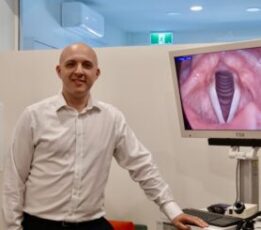Nodules in Children
Nodules are bilateral (on both vocal cords), benign (not cancerous), soft swellings of the vocal cords. They can vary in size and in duration and can be acute or chronic. Vocalnodules are caused by excessive muscle tension inthe larynx, which is where the vocal cords are situated. Use of the voice with excessive muscle tensionis generally referred to as “vocal hyperfunction”. Classically, children with nodules are in the habit of talking too long, too loudly and with too much effort.
Causes
It is rare to find just one vocalbehavior that has produced the voice problem, especially with children. Usually vocal nodules are due to a combination of the following:
- Excess talking and/or singing –e.g. school camps, plays or showrehearsals, shouting in the playground, overusing the voice during an infection, overusing the voice when tired or upset
- Forceful use of the voice
- Coughing and loud forceful sneezing, which is particularly an issue for children with asthma or a post nasal drip (when excessive mucus produced by the sinuses)
- Crying, laughing and loud or prolonged outbursts of emotion. This can include tantrums and expression of negative emotions like anger or frustration
- Constant coughing or throat clearing –causes the vocal cords to crash together and can cause swelling
- Making sound effects –common in children! This can include explosion and monster noises, character accents, using glottal fry when talking; especially if noises are made while breathing in!
- Drynessin the larynx and throat; caused by many factors including the overuse of medications and caffeine (e.g. Coke). Mouth breathing can also be potentially drying
- Not enough fluid intake. Good hydration is necessary for a healthy respiratory and vocal system. Asimple way of checking for adequate fluid intake is to ensure that urine is pale in colour.
Signs and Symptoms
- Dysphonia (presents as a hoarse, breathy or rough voice)
- Intermittent aphonia (temporary loss of voice, especially after specific events such as a sports day or birthday party)
- Voice breaks –sounds as if the voice has “cut out” for a second
- Pitch breaks –where the voice changes briefly and abruptly from a normal to a high pitch (sometimes heard as squeaks in the voice)
- A very loud voice
- An effortful or strained voice – as if it’s taking a lot of effort to produce voice
Treatment
- Often-times, no specific treatment is required; just education about the diagnosis, understanding that these nodules often evolve and even regress in a large number of children, especially when they transition through puberty.
- Voice therapy from a speech pathologist to improve vocal technique and vocal habits, reduce muscle tension in and around the larynx, and to help the child learn strategies to look after the voice







